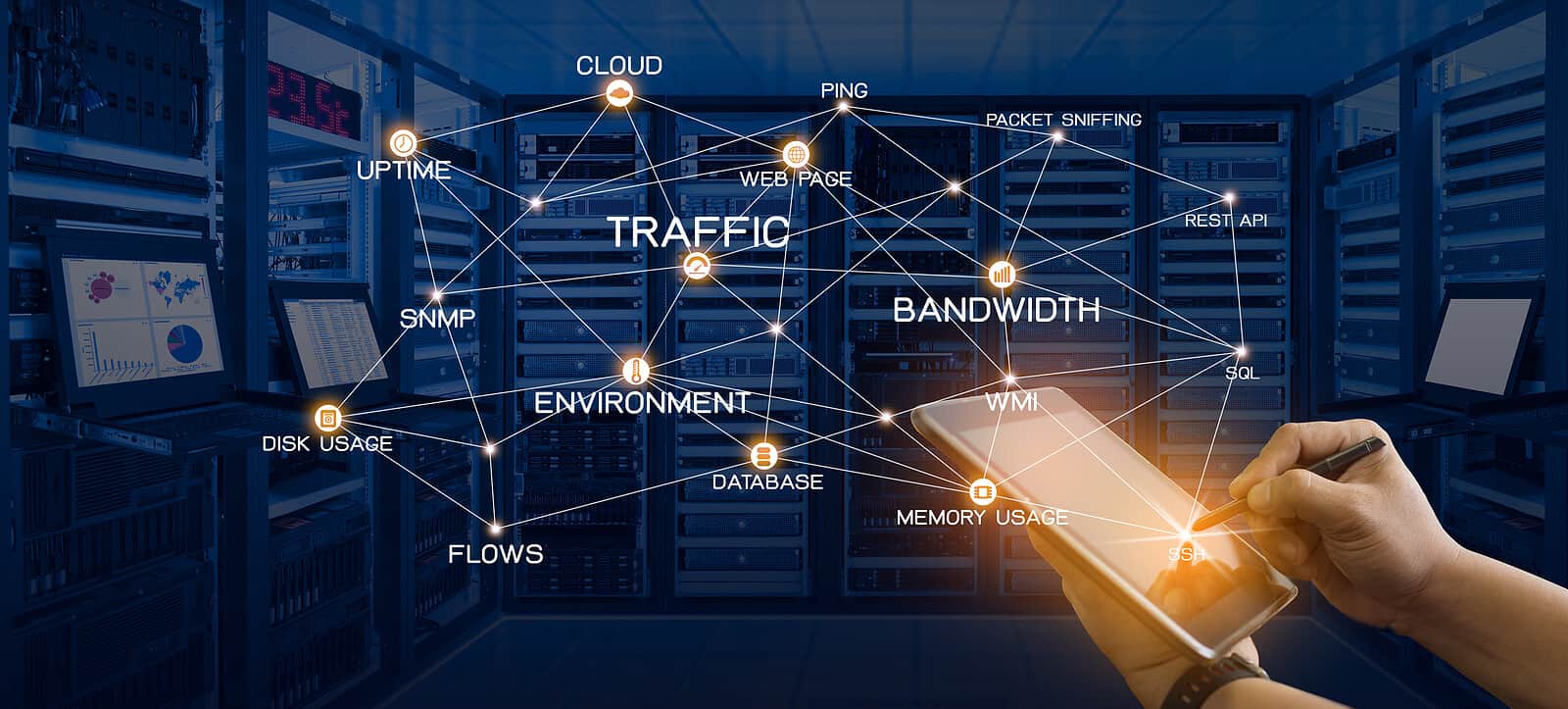
In today’s hyperconnected business landscape, even a few minutes of network downtime—or slight performance degradation—can cause significant productivity loss, missed opportunities, and frustrated customers.
That’s why real-time network monitoring is no longer a luxury—it’s a mission-critical function for any organization that values operational efficiency, customer satisfaction, and business continuity.
Imagine you’re driving a car without a speedometer, fuel gauge, or warning lights. You wouldn’t know how fast you’re going, when you’re running out of gas, or if your engine is overheating. That’s exactly what it’s like to run a business or IT system without real-time network monitoring. You’re operating blind—and that’s a risk no modern business can afford.
What Is a Network?
A network is simply a group of connected devices—like computers, printers, servers, phones, and routers—that share information and resources. Networks can be small (inside a single home or office) or span across cities and countries in large enterprises. These devices work together by sharing information through cables or Wi-Fi connections. But like any team, sometimes parts of the network:
- Get slow
- Miscommunicate
- Break down
When that happens, you might experience slow internet, unresponsive apps, file upload failures, or even complete service outages. Without real-time visibility, diagnosing and fixing these problems can be like finding a needle in a haystack.

What Is Real-Time Network Monitoring?
Real-time network monitoring means actively watching and analyzing your network 24/7 to detect issues as they happen. It checks:
- Are all devices operating correctly?
- Is internet traffic flowing smoothly?
- Are there any slowdowns, disruptions, or unusual activities?
- Is anyone trying to breach the network’s security?
Think of it as installing security cameras and sensors across your entire digital ecosystem, constantly inspecting performance, health, and threats—and alerting you instantly when something’s wrong. It’s proactive, not reactive.
Why Should You Monitor Your Network?
If you don’t monitor your network, you might not notice a problem until:
- Your entire office loses internet connectivity.
- A customer calls to complain your website is down.
- Employees waste hours waiting for applications to load.
- A hacker breaks in and steals sensitive data.
By the time you realize there’s an issue, the damage is already done—and recovery could be expensive, time-consuming, and reputation-damaging. With real-time monitoring, you can spot small problems before they explode into big ones, fixing them fast, often before anyone notices.
Why It Matters
Here’s what real-time monitoring empowers you to achieve:
- Early Detection of Problems: Real-time insights let IT teams identify and fix issues—such as bandwidth congestion, device failures, or hardware bottlenecks—before they affect users or operations.
- Optimized Network Performance: By studying live traffic patterns and device usage, you can optimize bandwidth allocation, prioritize mission-critical applications (like VoIP calls or video conferencing), and avoid performance slowdowns.
- Reduced Downtime: Faster detection leads to faster response. Proactive alerts enable IT teams to act before systems crash or services become unavailable, minimizing downtime and its costly effects.
- Better Capacity Planning: Live usage data helps businesses forecast future needs—whether that’s upgrading bandwidth, adding new servers, or adjusting load balancing—to ensure smooth scalability.
- Stronger Security Posture: Real-time monitoring isn’t just about speed and uptime—it’s about security. Unusual access attempts, DDoS attacks, rogue devices, and internal threats can all be detected early through intelligent monitoring, allowing swift mitigation before real damage occurs.

What We Monitor at Atlas Channels
At Atlas Channels, we take real-time monitoring seriously. We monitor critical network aspects such as:
- Network traffic and bandwidth usage
- Device and server uptime
- Application performance metrics
- Firewall and security logs
- Connection failures and bottlenecks
- Latency, jitter, and packet loss
- User activity and access control logs
Our clients have access to an intuitive monitoring dashboard that offers:
- Real-time data visualizations
- Historical performance analytics
- Custom alerts delivered via email, SMS, or ticketing systems
This way, you’re always a step ahead—whether preventing downtime, optimizing performance, or strengthening your cybersecurity defenses.
Our Tools and Approach
At Atlas Channels, we leverage cutting-edge monitoring technologies, including:
- SNMP-based monitoring tools for device health and metrics
- NetFlow and packet analysis for traffic flow visibility
- AI-driven network anomaly detection to spot subtle security threats
- Cloud-integrated monitoring for hybrid IT infrastructures
Our solutions are scalable for small businesses, mid-sized organizations, large enterprises, and government networks—offering complete visibility across physical, wireless, and cloud environments.
Common Alerts You Might See (And What They Mean)
- High CPU Usage – A device or server is working too hard.
- Device Down – A device has disconnected or is offline.
- Packet Loss – Data isn’t reaching its destination properly.
- Slow Response Time – Network congestion or bottlenecks.
- Unknown Device Detected – Possible security breach or rogue device.
These alerts help you catch problems early, troubleshoot faster, and avoid major disruptions.
Conclusion
You wouldn’t drive a car without a dashboard, and you shouldn’t run a network without real-time monitoring. Whether you’re managing a small business, a home office, or a large enterprise, network monitoring keeps your system running smoothly, securely, and efficiently.
Real-time network monitoring isn’t just a technical function—it’s a business advantage. It gives you control, peace of mind, and the agility to respond instantly to threats or performance issues.
By investing in continuous monitoring with trusted partners like Atlas Channels, you’re ensuring that your network stays resilient, your operations stay efficient, and your customers stay satisfied.
